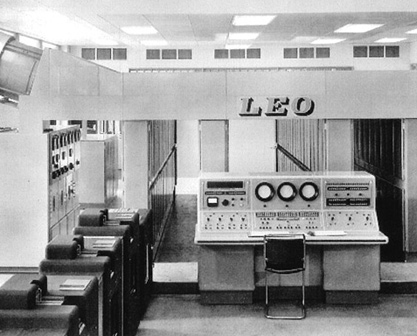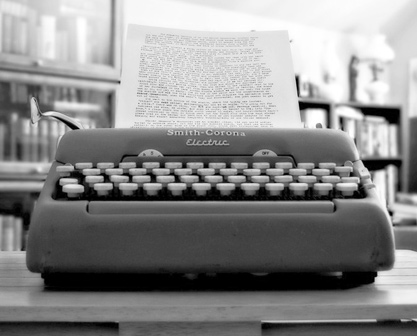| Chronology |
|---|
|
June 13, 1800 – The federal government moves from Philadelphia to Washington, DC. The first Treasury building is one of the few completed in time and ready for occupancy, 69 employees begin work in the building. |
|
1808 - Italian Pellegrino Turri builds the first practical typewriter to help a blind friend correspond, and in 1809 Baltimore shoemaker, Peregrine Williamson receives the first American patent for a “metallic writing pen”. |
|
1814 – August 24-25, the British march on Washington, D.C. and burn the Treasury building to the ground during the War of 1812. Rebuilding begins a few months later. |
| 1829 – Joseph Dixon introduces the first graphite pencil in America. By 1872 his factory in Jersey City, NJ is producing 86,000 pencils a day. |
| 1833 – March 31, the Treasury building is set on fire by Harry and Richard White in attempt to destroy records in the building that would be used to confuse them of a military pension fraud scam. |
| 1836 – Congress approved funding for a new “fireproof” Treasury building on the same site as the previous building. It would become the Treasury building as we know it today. By 1839 the first section of the wings of the new building (east and center) designed by architect Robert Mills are ready for occupancy. Construction of these wings is completed in 1842 at a cost of approximately $700,000.00. |
| 1841 – Samuel Slocum of Poughkeepsie, NY receives a patent for a “machine for sticking pins into papers”; an early version of the stapler and in 1845, Perry and Co. manufacturers in London receive a British patent for the rubber band. |
 1855 – Construction begins on the South and West wing of the Treasury building. By 1860 the construction of the South wing is substantially completed; among the first occupants are military commanders of the Union Army. |
| 1862 – The first national paper currency, “green backs” are printed on presses installed in the basement of the Treasury building. |
| 1865 – After the assassination of President Abraham Lincoln, Treasury Secretary McCulloch lends his office to Vice President Johnson to function as the temporary President’s Office until Mrs. Lincoln has had time to grieve and leave the White House. |
| 1866 – The old State Department building was demolished to allow construction of the North wing of the Treasury building. |
| 1867 – Although variations were patented as early as 1829, the first typewriter that could produce a document faster than manually writing one was a Remington typewriter in 1867. It was also the first typewriter with a QWERTY keyboard. |
| 1869 – The North wing of the Treasury building is completed, President Grant’s Inaugural Ball is held in the Cash Room. |
| 1870 – Production of currency, the “Currency Room” (later BEP) is moved from the Treasury building basement to the attic (5th floor) |
| 1876 – Office equipment exhibited at the Centennial Exhibition in Philadelphia includes an early telephone, telegraph, copying press, calculator, typewriter and a water cooler. In 1877 the first telephone in the Treasury building is installed in Secretary Sherman’s office; he is the first person to have a private phone line directly to the White House. |
| 1880 – BEP moves into a building outside of the Treasury and paper money is no longer printed from start to finish at the main Treasury building. |
| 1884 – Lewis E. Waterman receives a patent for a “fountain-pen” in which the nib of the pen is supplied from a barrel or reservoir in the handle revolutionizing ordinary writing. |
|
|
| 1887 – The A.B. Dick company licenses Thomas Edison’s patent for Autographic Printing and soon thereafter begins putting into production and marketing the Mimeograph Machine. |
|
1890 – Electricity is installed throughout the Treasury building and in 1891 a separate drafting studio building is built in the south courtyard for the Office of the Supervising Architect. At a cost of $25,000.00 the drafting space houses 160 employees. |
| 1893 – James Cutler of Rochester, NY receives a patent for the “Letter Box Connection”, a mail chute system that is installed vertically through the floors of a building to enable letters to be sent to a lower floor or receptacle without having to walk down to the lower floors. |
| 1894 – The “Workman’s Time-Recorder” is invented by Daniel Cooper to record when an employee punches into work in the morning and out of work at the end of the day. |
| 1899 – Johann Vaaler of Norway receives a German patent for the “paper clip”, followed by a U.S. patent for the “paper clip or paper holder” in 1901. |
| 1900 – Approximately 100,000 people in the United States are employed as secretaries, stenographers and typists in offices, they average 60 hours a week per 6 day work week. |
| 1910 – The fifth floor of the Treasury building, previously considered an “attic” space is renovated to full office height dimensions and the first electric elevators are installed in the building. |
| 1919 – Construction is completed in 14 months for a new Annex building across the street from the Treasury building on the site of the former Freedman’s Savings Bank building. |
 1933 – For the first time, the President of the United States appoints a woman, Nellie Tayloe Ross, as Director of the Mint. She was the first ever female governor of a U.S. state in Wyoming (1925-1927) and served as the Mint Director for 20 years until 1953. Prior to Ross’ arrival, Mary Margaret O’Reilly had been serving as the Assistant Director of the Mint since 1924. FDR’s appointment of Ross meant that women occupied the two top positions at the Mint together for 5 years until O’Reilly retired in 1938. |
| 1934 – The Associated Press begins to use “wirephoto” technology to transmit photographs, one of the first commercial applications of what would later become the “fax” machine. In 1935 Ray Stanton "Avery" invents a label making machine for making self-adhesive labels to provide retailers with removable price stickers. |
| 1938 – Hungarian journalist Laszlo Biro produces the first practical ballpoint pen and in the same year, Chester Carlson provides the first successful demonstration of the xerography process for transferring near-perfect images of text as a copy machine. |
| 1939 – Office of the Supervising Architect is phased into the Public Building Administration and Treasury ceases responsibility for federal buildings architectural design and construction. |
| 1949 – Hywell Murrell gathers together a group of like-minded researchers and establishes the "Ergonomics Research Society" in London to study human capabilities in relation to work demands. |
| 1949 – President Harry Truman appoints the first woman Treasurer of the United States, Georgia Neese Clark. Since that appointment, over the last 67 years, every Treasurer appointed to the position has been a woman. |
| 1950 – Marcel Bich and Edouard Buffard introduce the Bic Cristal ballpoint pen in France, a simple inexpensive ballpoint pen. “Bic” trademark first used in the U.S. in 1963. |
|
|
| 1952 – “Rolomatics”, alphabetized rolling card holders are introduced for holding business cards. It is the precursor of the “Rolodex”, and improved design that would go on sale in 1958. |
| 1956 – Bette Nesmith Graham introduces “Mistake Out” later known as “Liquid Paper” for correcting typewriting errors to secretaries in her office, mixing batches of it in her kitchen blender at home using white tempera paint as the base. She sold the product from her house for 17 years until it was profitable and in 1979 when it was bought by the Gillette Corporation for $47.5 million dollars. Bette was also the mother of Michael Nesmith of the popular 1960’s band “The Monkees” who inherited her fortune a year later in 1980 when she died. |
1956 – The first computer at Treasury containing 6,500 radio tubes is switched on. In 1957, Smith-Corona begins selling portable electric typewriters and in 1959 the first commercial Xerox copier machine, the Haloid Xerox 914 is introduced. |
|
1961 – IBM introduces the Selectric typewriter in which instead of characters on separate keys they are molded into a rotating metal ball. The typestyle can be changed by switching out the ball to another one with a different font. |
| 1964 – The number of computers in the U.S. grows from 15 ten years earlier to 17,000. |
| 1969 – Approximately 225 million telephones are in use around the world, more than half of them in the United States. |
| 1973 – Treasury establishes the "Office of Computer Science" to administer computing needs and technology. |
 1976 – On June 30th the last customers are waited on in the Cash Room, ceasing operations as a public banking space. |
| 1978 – Gillette Company receives a patent for a ball-point writing pen with erasable ink, introduced as “Eraser Mate” pens. In 1980 3M Company introduces “Post It Notes” products. |
|
1985 – The Treasury Library begins computerized research using commercial online data services. An office used by the Treasurer is restored and an 1864 burglar-proof vault wall uncovered and restored. |
|
|
| 1994 – The Herman Miller Co. Aeron ergonomic office chair is selected for the permanent collection of the Museum of Modern Art in NYC. |
| 1996 – June 26th, a roof fire on the north wing of the Treasury building closes the building for one week. |
| 1997 – The first comprehensive Treasury building restoration and modernization project since 1910 begins with one wing of the building at a time closed for construction. The project would take 10 years to complete. |
|
2003 – A year after the Department of Homeland Security is established by an act of Congress, three historical Treasury bureaus are transferred to the new Department: U.S. Customs Service (est. 1789), U.S. Secret Service (est. 1865) and the Federal Law Enforcement Training Center (est. 1970). |
| 2004 - The Facebook website is launched. |
exterior walking tour of the Treasury Building
with our mobile website on your
smartphone or tablet device.




